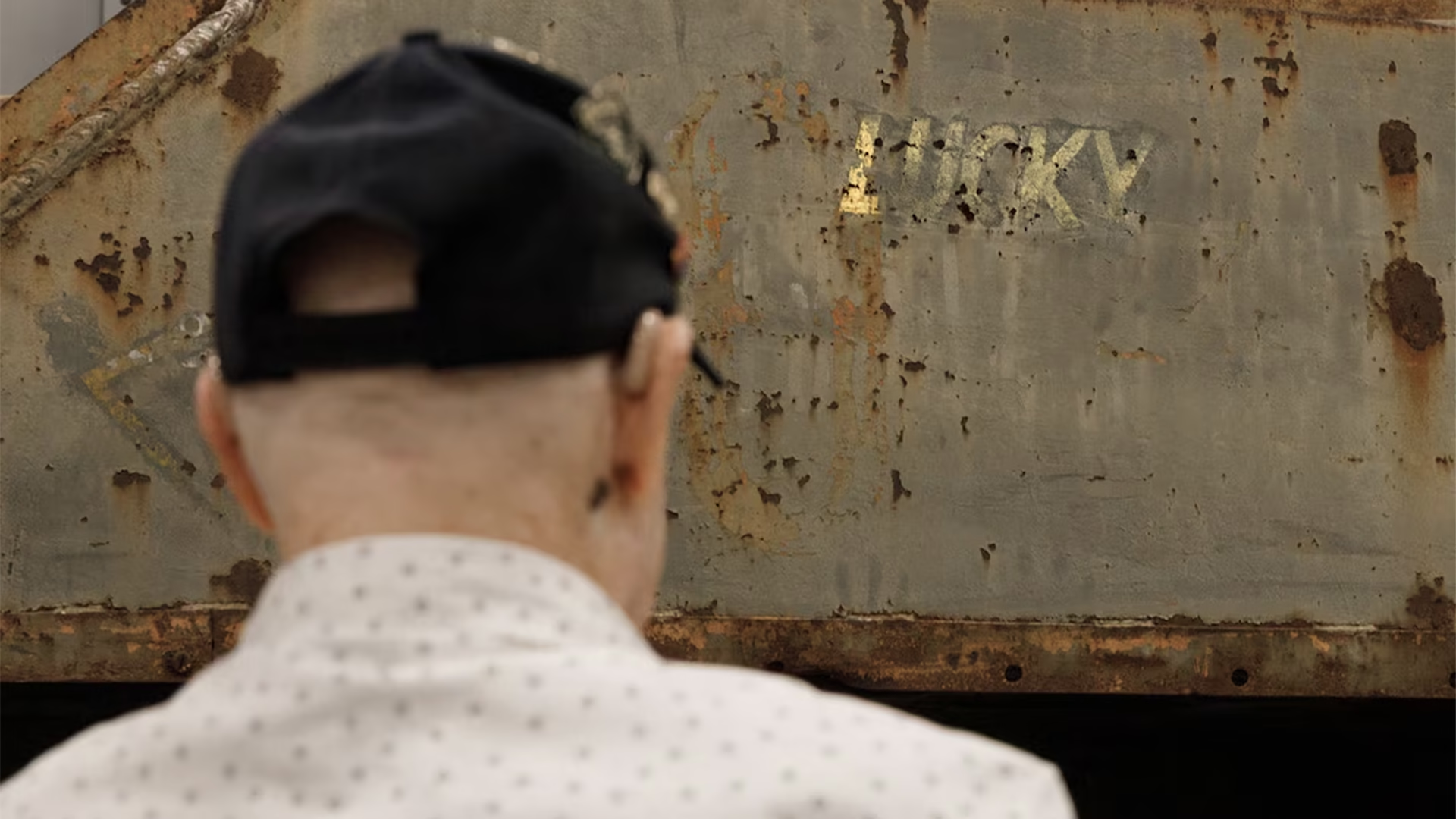Marine veteran reunites with tank he drove on Iwo Jima

Eighty years after the bloodiest battle in Marine Corps history, Leighton Willhite traveled to the National Museum of the Marine Corps’ support facility in Virginia for a reunion, of sorts, with the M4A3 Sherman tank that he drove onto the beaches of Iwo Jima.
Now 100, Willhite stood beside the tank, “Lucky,” on Aug. 15, the 80th anniversary of the announcement of Japan’s surrender in World War II, according to a museum news release. Lucky is one of just six surviving Sherman tanks that saw combat on Iwo Jima.
“It’s amazing,” Willhite said in the news release. “I never thought I would see the tank again. That tank was my life.”
Top Stories This Week
The Marine Corps Heritage Foundation arranged for Willhite to see the tank along with his wife, son, grandson, and great grandson, retired Col. Keil Gentry, director of the National Museum of the Marine Corps, told Task & Purpose.
“Having Cpl. Willhite here, standing beside this tank again after 80 years, is very special,” Gentry said in the news release. “It is a powerful reminder of the courage and sacrifice that defined the Marines who fought on Iwo Jima.”
The battle of Iwo Jima raged from Feb. 19 to March 26, 1945. The Japanese defense was tenacious, and nearly 7,000 Marines and sailors had been killed and another 20,000 wounded by the battle’s end.
Navy Fleet Adm. Chester Nimitz later famously said that “Uncommon valor was a common virtue” among the U.S. troops who fought on Iwo Jima.

Willhite was a 19-year-old corporal at the time, and he took part in the opening assault on Iwo Jima with C Company, 5th Tank Battalion, the museum news release says. It was the first battle for his tank, Lucky.
The crew supported Marines near Hill 362A, north of Mount Suribachi, and they carried out rescue missions under heavy fire. During one moment in the battle, Willhite covered his commander, Lt. Leonard Blake, as they moved to rescue the crew of another tank that had become trapped.
Willhite was later awarded the Bronze Star with “V” device for valor, and Blake received the Silver Star.
Following the battle, Lucky was moved to Hawaii and selected to be fitted with a flamethrower for the planned invasion of Japan, but following Japan’s surrender, it was sent to Camp Lejeune, North Carolina, where it remained until the 2000s. Eventually, it was added to the National Museum of the Marine Corps’ collection.
Then in 2023, the museum’s arms and armor curator, Jon Bernstein, inspected Lucky and noticed evidence that the tank had been modified by the 5th Tank Battalion.
Looking into the matter further, Bernstein was able to determine which unit the tank had belonged to, along with its name and which Marines had served as its crew, ultimately leading to Willhite’s visit last month to the museum’s support facility to see Lucky for the first time in 80 years.
“Today is the end of the beginning and is the culmination of two years of research and piecing the story together,” Bernstein said in the news release. “To bring Cpl. Willhite back together with the tank he drove in battle is to bring that story to life.”












